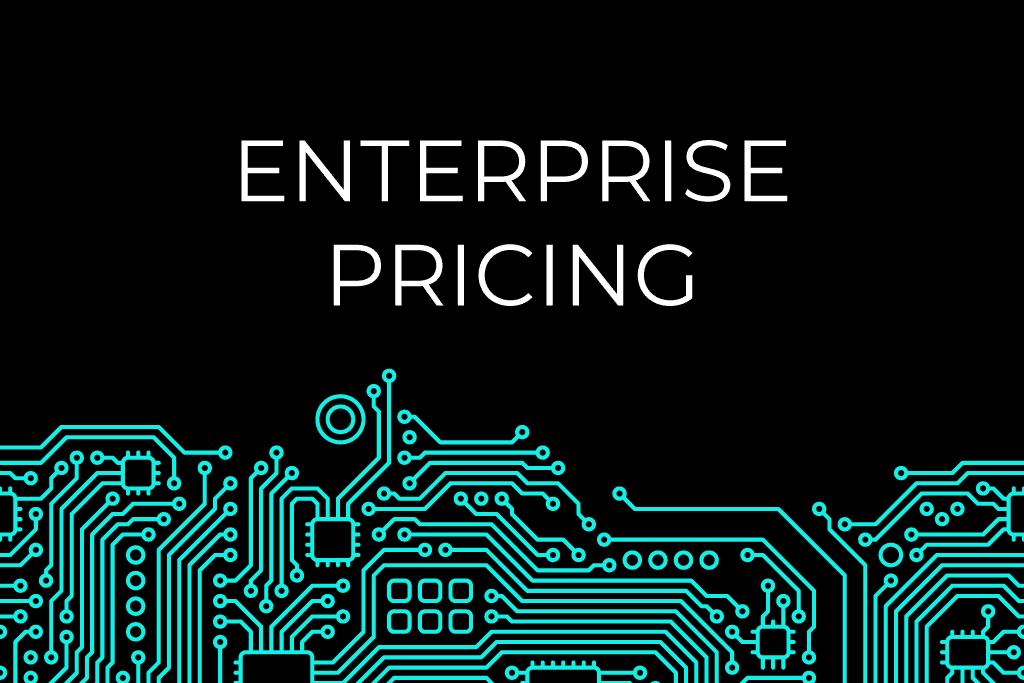An Extreme Guide to SaaS Sales: Process, Metrics +More!
Do you have a great SaaS product, but you’re not sure how to sell it?
Salespeople rarely go door-to-door anymore, selling tangible products you can test out in the living room.
Like everything else, sales have gone online, and that’s especially true for the SaaS industry. In the following article, we’re going to give you all the details and tricks you need to finetune your SaaS sales game so you can make sure you’re selling your SaaS product in the best way possible.
Here’s what we’re going to cover:
- What Is SaaS Sales?
- What Is the SaaS Sales Process?
- SaaS Sales Cycles
- The SaaS Sales Model
- The Most Important SaaS Sales Metrics
- What Does a SaaS Salesperson Do?
- How to build a SaaS Sales Strategy
- Top Tactics in SaaS Sales
What Is SaaS Sales?
SaaS sales is the process of selling web-based software to clients by acquiring new customers or upselling current customers.
You must know your product inside out and present your prospect with a pitch that demonstrates clearly how your software can solve their business problem.
While similar to a traditional sales model, SaaS sales has unique challenges that require a different approach.
What makes SaaS sales different from other kinds of sales?
While SaaS products and traditional physical products are both sold to solve problems, SaaS products are intangible and require different selling techniques.
A SaaS sales rep will have to know every in-and-out of their product, but most crucially, the specific problem it addresses for each sales prospect.
Because of the intricate nature of integrating a SaaS product into a company’s existing software stack, the sales cycle will be longer and require more individualized attention from the SaaS sales professional.
Book a Consultation
What Is the SaaS Sales Process?
1. Generating leads
Step one in any sales process is to generate leads. For your SaaS product, most of your leads will be generated online, as anyone searching for a SaaS solution will go there first. The best ways to generate leads online will be through the following sources:
- Social networks
- Blogs
- Newsletters
- Online ads
- SEM – Paid Search
- Link building/Digital PR
- Thought Leadership Guest Posting
- Content Partnering
- SEO content
- eBooks and whitepapers
- Webinars
- YouTube videos
Starting a blog on your SaaS website allows you to create material that promotes your brand to potential customers while simultaneously providing informational content.
Implementing a SaaS SEO strategy will improve your search engine rankings, ultimately bringing you more inbound organic traffic. You can also promote your blog on social media for more visibility, drawing even more traffic. And more traffic to your site equals lead generation.
The graph below shows the leading goals achieved by B2B marketers when using content marketing.

2. Prospecting
While similar to lead generation, prospecting involves a salesperson reaching out to a business on a one-to-one basis. Through a sales pitch, the salesperson garners interest from people who may not know your SaaS company but could benefit from your product.
For example, a salesperson reaching out to a prospect on LinkedIn through a direct message with a cold sales pitch would be prospecting. Outbound emailing is another type of prospecting.
3. Qualifying
Once you’ve got leads coming in, you’ll want to pick out the ones that have a higher probability of purchasing your SaaS product. That’s where qualifying comes in. You want your salespeople to spend their valuable time on leads that are more likely to convert to paying customers.
Here’s an example of a qualifying action: sales representatives making a phone call to leads who have signed up for more information. This kind of outreach can help your sales team weed out prospects who won’t benefit from the product.
4. Demonstrating
When you’ve qualified your leads and secured a one-on-one, your next step will be demonstrating how your SaaS product is going to solve a specific problem.
This is where your salespeople will have the opportunity to go into detail about the product. In addition, this step will help identify the prospect’s problems so you can better situate your SaaS product to provide a solution.
As SaaS products are rarely sold face-to-face, having a framework for handling sales tactics on phone calls will be necessary. Your sales team will need to catch every nuance and inflection of a customer’s voice to address any hesitations they may not be voicing.
5. Handling objections
At this point in the sales process, decision-makers will be considering your product seriously and thoroughly vetting it to make sure it’ll fit their workflow.
Having an in-depth knowledge of the product will be crucial for salespeople at this stage. They’ll need to handle every query a prospect might have by offering solutions.
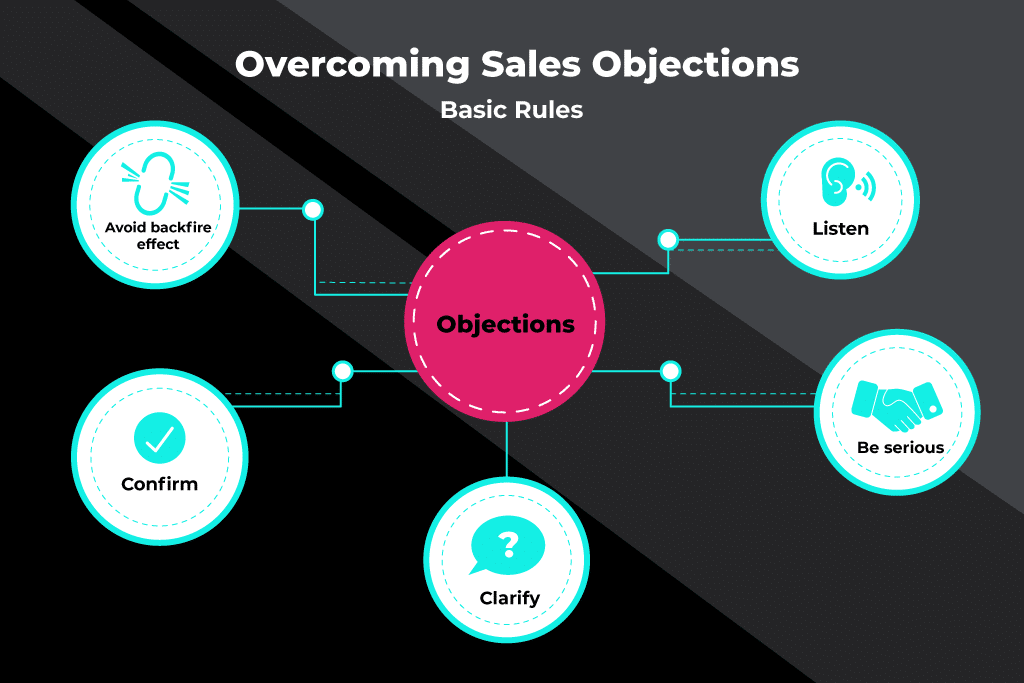
If a customer doesn’t think the SaaS product is worth the price or implementation time, you must demonstrate the product’s value. Knowledge of the prospect’s workflow pain points will help resolve any objections.
6. Closing
If you’ve made it to the closing, congrats. Most of the hard work is done. At this point, your sales team will be delivering paperwork and final proposals, re-negotiating any final details, and signing off on a (hopefully) productive future with a new customer.
While this part of the process will look different for companies based on their market, it’s essential for all SaaS businesses to create a strong connection with their customer so they feel they’re getting not just a product but a business relationship.
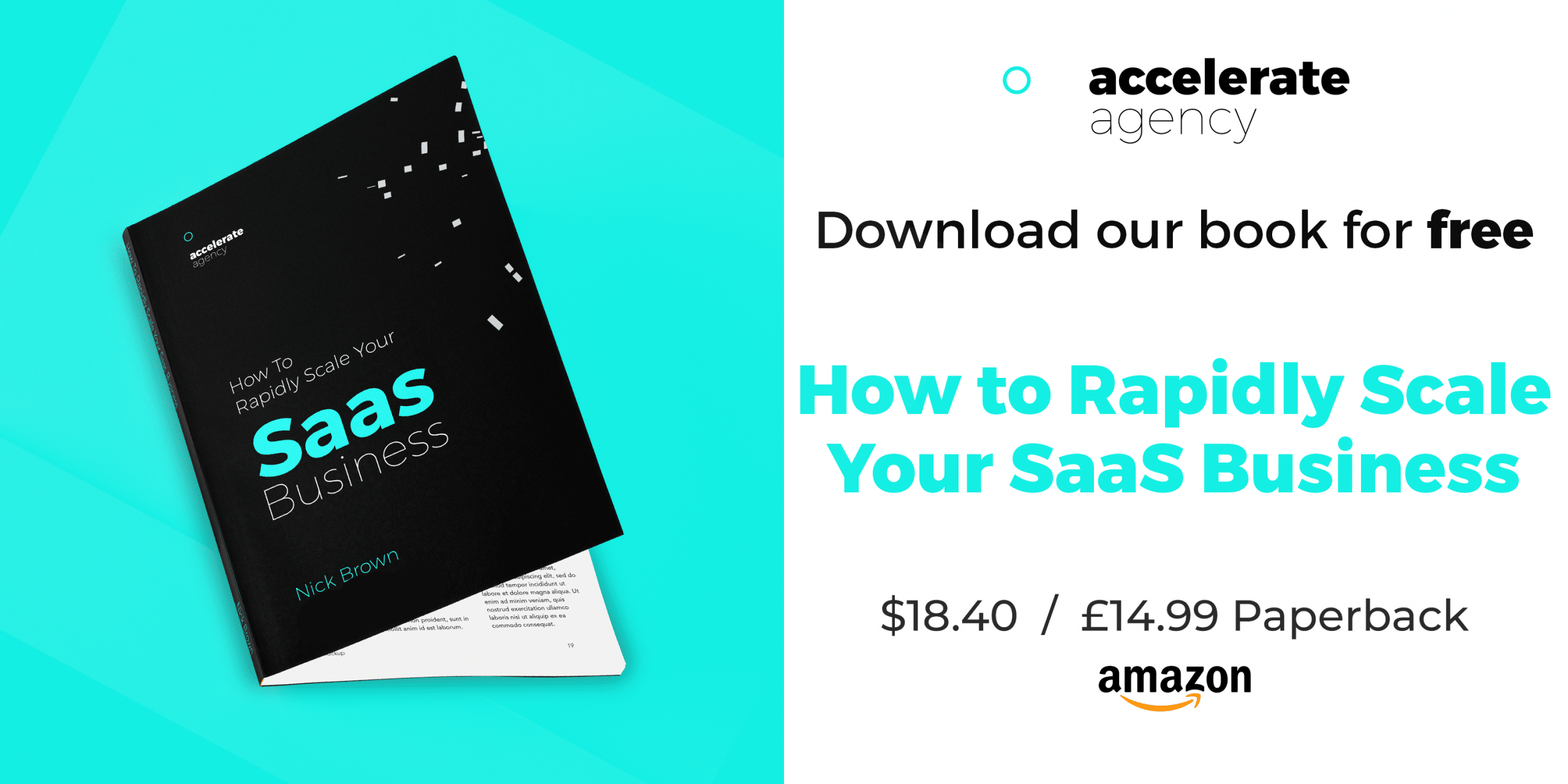
SaaS Sales Cycles
A SaaS product sale cycle from beginning to end will vary depending on a few factors, most notably the price of the product and the number of stakeholders and decision-makers involved.
Factors that affect SaaS sales cycles
Price
The more expensive the SaaS product, the longer the sales cycle. Less expensive SaaS products will have a shorter cycle, anywhere from one to three weeks.
Stakeholders
The amount of stakeholders involved in a SaaS purchasing decision directly correlates with the price. The more expensive a SaaS product is, the more stakeholders will be involved, including account executives. And more stakeholders means more demos, meetings, and budget planning, which means a longer sales cycle.
Size of business and complexity
Explaining the benefits a SaaS product will bring to a business will depend largely on the size of that business. If a smaller startup purchases a SaaS product, they could have it up and running in a week because they have fewer people to onboard and less logistical complexity, so the sales cycle will be shorter.
A larger enterprise-level company will have more employees to onboard and over more locations. They will have a larger existing system to incorporate the SaaS software into or replace, and these factors will result in a longer sales cycle.
Customization
If your SaaS product is highly customizable, the sales cycle will increase as each prospect will want a configuration of the product that addresses their business needs. Negotiations and lengthy demos to test options will add to sale cycle timelines.
Free trials
Offering free trials to prospects is a great way to show them the benefits of your SaaS product, but it will also increase the sales cycle. Consider a shorter free trial window, for example, 14 days instead of 30 days, to encourage prospects to make a decision sooner.

New markets
Your sales cycle will increase in new markets because the prospects in these markets will be unaware of your product and what it could do for their business. Factor in this informational time for customers in new markets and adjust your planning around a longer sales cycle.
The SaaS Sales Models
Knowing your business and the markets you’re trying to sell to is instrumental in determining the best sales model for your SaaS product.
Customer self-service
The SaaS sales model you’ve probably encountered most, customer self-service, means you have no sales team or a limited team. Customers primarily engage with your product through marketing efforts, like blogs and social media. This model works well for lower-priced SaaS products sold on a large scale, like Netflix.
Transactional sales
A transactional sales model is what comes to mind when you think of a traditional sales team. It consists of a sales team run by a sales manager that receives leads.
Transactional sales teams can negotiate and offer discounts to close on sales. SaaS sales teams that operate a transactional sales model typically utilize inside sales instead of traveling and meeting prospects in person.

Enterprise sales
Enterprise sales often involve specialized SaaS products sold at a low quantity. Enterprise pricing means a dedicated sales team, customized demos, business development, and a months-long sales cycle.
The Most Important SaaS Sales Metrics
Below are some of the most important metrics you’ll come across in SaaS sales.
Customer acquisition cost
Also known as CAC, this metric covers what it costs to acquire a new customer. To measure this metric, divide the cost of sales and marketing by the number of customers acquired in the same period.
Lead velocity rate
This metric shows if leads are coming in faster than revenue. A good metric to analyze if you’re planning for future growth.
Customer lifetime value
Also known as LTV, this metric shows the estimated amount of revenue a customer will bring in over the relationship.
Win rate
The win rate measures the percentage of closed leads by your sales team over a given period.
Monthly recurring revenue
MRR is the amount of money your business can expect to bring in every month from customer subscriptions.
Sales qualified leads
An SQL is a potential lead that data indicates is ready to talk to a sales rep.
Demo-to-trial ratio
This measures the number of product demos that turn into product trials and how many trials turn into closed deals.
Churn rate
The churn rate shows the percentage of customers lost per year and is a good indicator of retention. To calculate, divide the number of customers you started with by the number of customers you’ve lost.
What Does a SaaS Salesperson Do?
A SaaS salesperson sells SaaS products to small, medium, and enterprise-level businesses. A SaaS salesperson has to be highly knowledgeable about the product they’re selling and the types of solutions it provides.
SaaS salespeople need to be practiced in facing rejection, and they should be competitive. Besides knowing their product, salespeople should know their customers so that they can anticipate any roadblocks along the sales cycle.
How much can you make selling SaaS?
SaaS salespeople can expect to make more than the average salesperson because of their extensive knowledge of the product they’re selling and the longer sales cycles involved. Salespeople will generally earn a base salary and a commission on top of that.
However, there are different salary scenarios which we’ll cover in detail next.
SaaS sales compensation models:
- Base Salary and commission: A sales rep will earn a base salary and a commission from each deal they close.
- Commission only: A sales rep only makes money on the deals they close.
- Profit-based commission: A sales rep receives compensation based on the amount of revenue the company makes on a deal, not just the revenue total.
- Tiered commission: A salesperson’s commission will go up the more sales they close. Incentives to close deals to rise to the next commission tier.
- Residual commission: The sales rep gets a residual payment every time the customer renews their plan with the company.
- Delayed commission: The salesperson does not receive a commission until they’ve sold enough to cover their base salary or the company has made a profit.
SaaS sales salary
- According to Glassdoor, the average base salary for a SaaS salesperson is $49,000 a year. A senior SaaS salesperson can expect to make on average $68,000 a year, not including commissions.
Like most positions, SaaS sales salaries are dependent on the role, the responsibility, and the location.
- SaaS Sales Commission Rates
Commission rates can vary depending on the compensation model used. Still, most commissions are based on the MRR (Monthly Recurring Revenue) or annual contract value (ACV) of the business the salesperson brings to the company.
Per Indeed, an advertising salesperson can expect to make on average $15,000 per year in commission. A financial services salesperson can expect to make on average $10,100 per year in commission.
What makes a good SaaS salesperson?
While there’s no hard and fast rule about what makes a good salesperson, most will embody a few specific traits. Confidence is a big factor in sales; losing and closing deals requires a confident approach that doesn’t waver. Just as important as confidence is knowing the product you’re selling and your business.
Understanding the mission behind your business will help you approach deals confidently. Be truthful and honest with your customers, as it will help instill trust in you as a salesperson and in your business. While a CRM tool can help you keep track of information, staying organized at every level is vital as you will have a mass of information on multiple prospects.
How To Build a SaaS Sales Strategy
Building a SaaS sales strategy will depend on a few factors, some of which we’ve covered already and some extras we’ll go over below. Many of these building blocks will hinge on a detailed picture of your SaaS business, so know what you’re working with before you start.
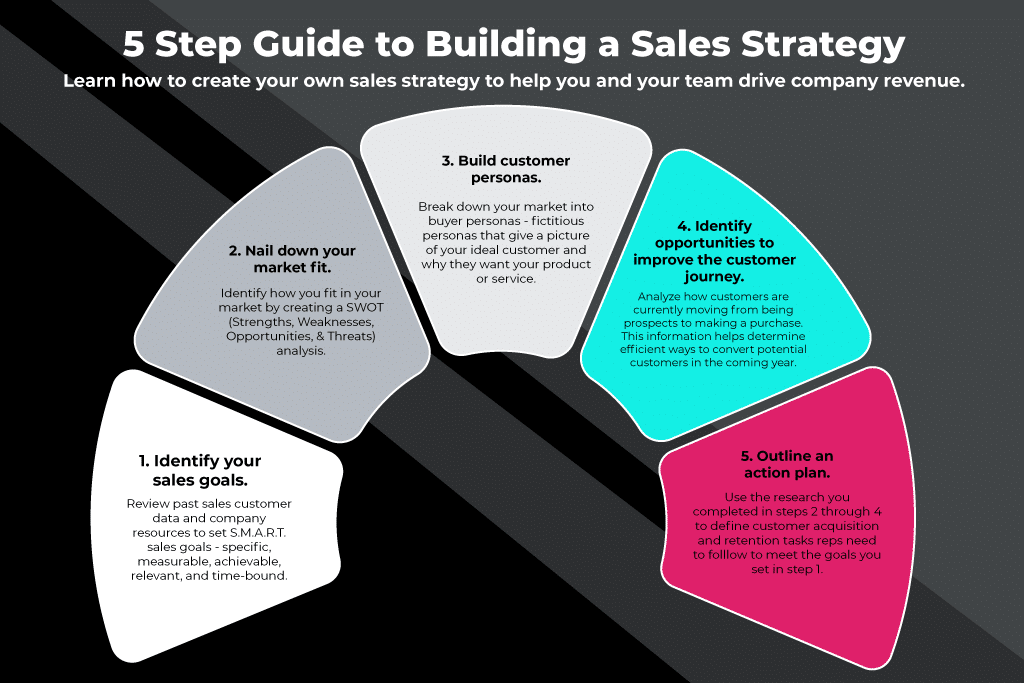
1. Determine your SaaS sales model
We talked about SaaS sales models earlier; determining which one is right for your business will depend on your business’s size and the product you’re selling. A customer self-service model might work for small startup companies, but it also works for a large company like Dropbox that sells to millions of customers a year.

That’s where knowing your product comes in. If your business is selling a SaaS product that exists in the market already, you won’t need a dedicated sales team to close deals; customers will know what they want.
For example, if someone is looking for file storage, like Dropbox, they know how that service will help them solve a problem. But if your product is new, like something you just invented, or it addresses a niche market, like warehouse inventory management, you’ll want to look at a transactional sales model or an enterprise sales model.
2. Identify your target audience, buyer persona, and unique value proposition
You know what your business is and who you are, but what about your customer? Identifying your target audience is an essential part of developing a sales strategy. To find your target audience, start by creating buyer personas.
Buyer personas are descriptions of your ideal customer based on research and data. You may already have some buyer personas, but if not, invest some time in creating them. Buyer personas can be beneficial across your business, as they can help other departments, like your marketing team.
Once you have an idea of your target audience, you can figure out your unique value proposition. Ask yourself, what problem does your target audience face? How can your SaaS product help them solve that problem? What is the result of the target audience using your SaaS product? More importantly, what is the value?
When you’ve answered these questions, you’ll have your SaaS product’s unique value proposition and a recipe for customer success.
3. Establish your prospect qualifying criteria
Once you’ve got leads coming in, you’ll need a way to find the prospects worth pursuing so your sales team doesn’t lose time chasing leads that won’t become customers.
First, you’ll want to create a set of criteria to qualify leads. Qualifying leads involves a prospect meeting specific requirements that will vary but most often include determining the budget, the need, and the timeframe.

Second, you’ll want to create a set of qualification questions that sales reps can ask prospects. These questions will help to determine if prospects meet the qualification criteria to move forward. An example of a qualification question would be, “What solutions have you tried in the past to solve your specific issue?”.
4. Set your goals
Sales goals are a fundamental aspect of any sales strategy and can provide key metrics to measure your sales team’s performance. Setting a sales quota can encourage your sales team to perform at a higher level, as well as offering incentives to meet or exceed those quotas.
Sales quotas can be profit quotas or volume quotas, for example, selling 100 units of a SaaS product in quarter one. Goals can be measured in the number of leads your SaaS sales team brings in, outbound phone calls they make, or their rate of product upsell to existing customers.
5. Monitor and measure performance
The only way to know if the sales strategy you’ve built is working is by monitoring performance and measuring key metrics. Investing in sales automation software can make tracking metrics easier, especially if you’re working with a large team. The data you collect will tell you where you need to focus more attention or adjust goals.
Top Tactics in SaaS Sales
Employing SaaS sales tactics will help your sales team generate leads and meet their objectives while strengthening your overall sales strategy.
1. Hiring an SEO agency
Not sure what keywords your SaaS business should be targeting? An SEO agency can help you develop an SEO strategy that enhances your sales strategy with custom SEO metrics and content. SEO enhances your business’s search engine rankings, accelerating the number of leads generated organically.
75% of B2B marketers report that SEO tactics are effective in achieving their marketing goals. If your marketing could use a boost from a SaaS SEO agency, we can help you create the right strategy with the right content.
2. Having a sales playbook
Do you know how McDonald’s became the best-selling fast-food company in the world? It’s because McDonald’s’ food tastes the same all over the world. From California to London, and everywhere in between, the fries all taste the same.
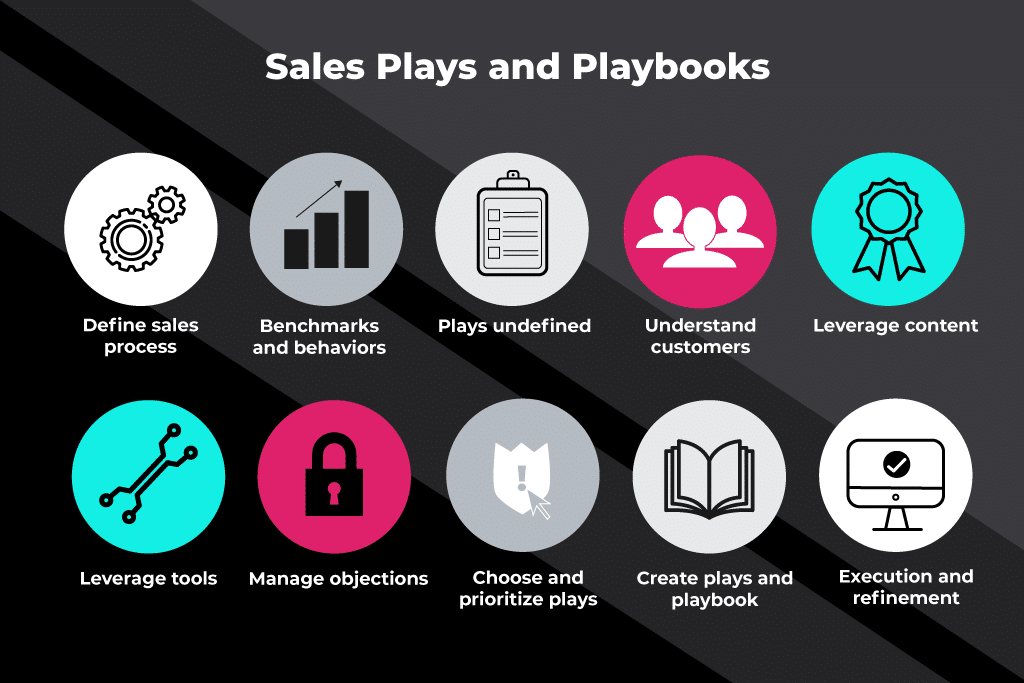
This consistent approach is crucial for your sales strategy, and a sales playbook will help you execute that vision. A sales playbook should contain everything your salespeople need to turn a prospect into a paying customer.
For example, your sales playbook could include email templates, qualifying criteria, B2B SaaS statistics, buyer personas, and really anything else you can envision.
The goal is to have every salesperson on the same page with the same tools at their disposal to achieve their sales goals.
3. Setting up customer support
The customer experience is one of the most important aspects of any business, let alone a SaaS business. Providing an excellent customer experience will benefit your SaaS sales in two ways:
First, prospects are more likely to convert to customers if they know your company has excellent customer service. Think about your own experiences with customer service and consider this stat: nearly a third of consumers would pay more to receive better customer service. A good customer experience is vital, and it can be a selling point for your SaaS business.
Second, a robust customer support setup can help you identify any weaknesses in your sales cycle that the sales team can address. Maybe your demo deployment is too slow; a customer or prospect may bring that to your attention, which you can then fix.
It’s About Selling Value
You can’t necessarily hold a SaaS product in your hand and show a consumer its material benefits, but you can still sell it. You just have to use the right tools and strategies for the job.
Now that you understand the sales process, metrics to follow, models to consider, and tactics to employ, you have everything you need to sell your SaaS product.

